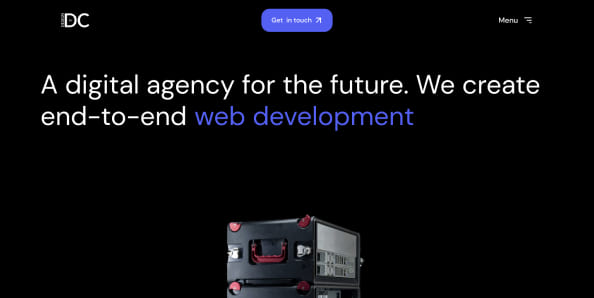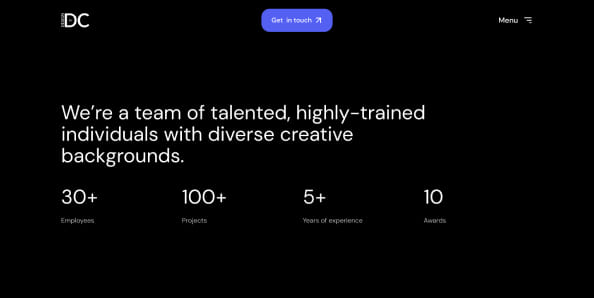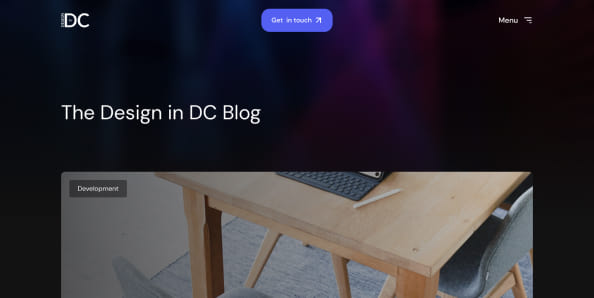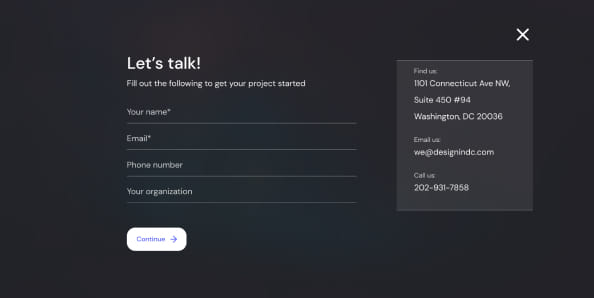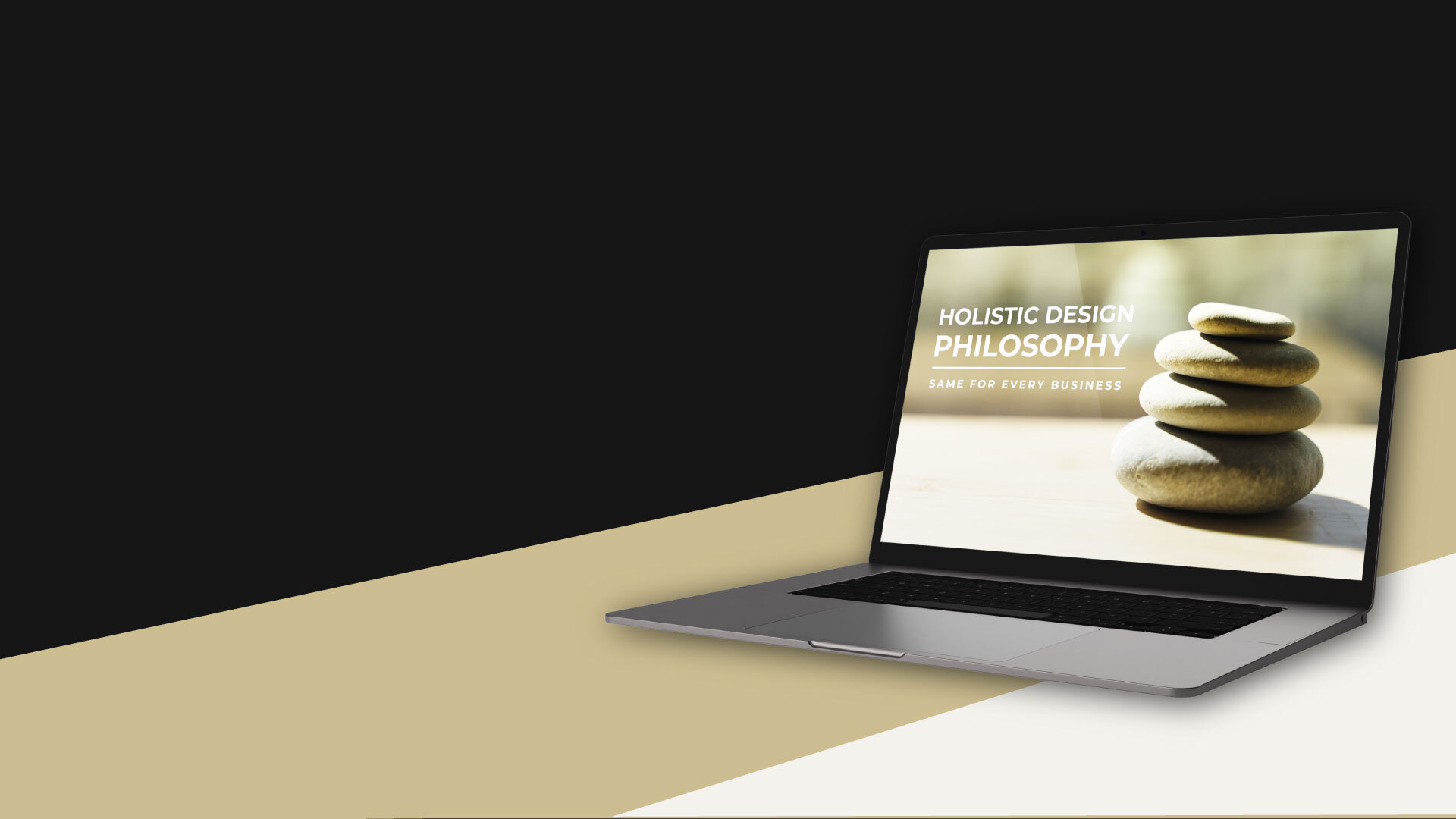How Can Businesses Adopt Holistic Design Practices?
I was taking a stroll through Adams Morgan the other day during a particularly beautiful day. I find Adams Morgan to be one of Washington DC’s more vibrant, dynamic, and diverse neighborhoods.
As I walked on the 18th St NW commercial corridor, something clicked in my head. I spotted new businesses and local stalwarts that have survived a new generation. I’m surrounded by beautiful colors, eclectic public art, and interesting stores. Variety is the spice of life, after all.
Working at creative agency, I am constantly enamored with systems, both indoor and outdoor
The street is such that I want to keep moving through this “outdoor room”. I am feeling spontaneous. I take lots of pictures of buildings that inspire me and of cool signs. I document the businesses that I want to check out later. I hope these businesses have good websites.
A strong neighborhood cannot exist where the elements are not mixing together. The businesses have their individual roles of creating a cohesive commercial core. But without context and working together, the commercial core fails. There are restaurants, services, shops, and homes. Cities work best when they are holistic by design.
Despite its reputation as a stuffy “government city”, Washington DC is a tapestry of unique neighborhoods. That is by design.
Holistic design practices should apply to any industry, any business, and any website
A city’s design is only memorable and productive when it’s holistic. If you walk through blocks of endless office towers, you can help but notice how “monocentric” it is. It’s not holistic. It’s taking one element (offices), and isolating it from everything else. It’s a fragile system. The same goes for a neighborhood that is all houses and nothing else. A holistic design considers building for more than one purpose. A productive neighborhood considers more than one facet of life. The same thing goes for websites.
Businesses that don’t have holistic design practices are fragile too. A brick and mortar business needs to think about how its website relates to the customer journey. Both online and offline. Holistic design practices are the result of thinking about many different customers. It takes learning how they think and feel.
A website that is only trying to do one thing is failing to see the broader picture.
Holistic design takes every element of the customer journey into account
We think about this a lot for our clients. During our discovery process, we place a great deal of importance on wireframing. Before creating the visuals, we are considering the flow. Design is not just about pretty visuals. It’s about flow too. This is the foundation to creating a unified, satisfying flow. Together we are creating a system that will encourage the flow of sales and customers. Most importantly, a holistic system can induce repeat business.
Here are the three questions to first ask when undertaking holistic design:
- What’s the problem the business wants to solve?
- What’s the ideal solution and what are all the elements that have to come together?
- How can everything come together in harmony and be achievable?
Holistic design practices go beyond the user’s direct interactions with a website
Our team considers the broader context of use. What are the triggers that may cause a customer to want to engage with your business in the first place?
I mentioned before what works about Washington DC as a city is its broader ecosystem. How different businesses and elements connect to create a cohesive ecosystem. Holistic design goes beyond finding a need or want and delivering a solution. Thinking about the small interactions that people have is as important as the large ones.
The most holistically-designed websites are able to ingratiate themselves into people’s lives
For example, think about a website that has several calls to action. It may call for you to buy something, but it may also lead you to a mailing list. This mailing list will keep you top of mind, even if you aren’t ready to buy something right now. Or imagine a website that rewards you for continued visits and purchases. Imagine a website that can dynamically optimize each time based on customer behavior.
A business can reach this level of holistic design across different points in a customer’s life. Social media plays a big role in people’s lives. How the website and social presence play off each other can be huge. Customers are better served. Businesses get more loyalty. A social connection establishes between the business and the customer.
With holistic design, businesses should understand the broader ecosystem that they exist in
Where are customers coming from? Why are customers coming to you? A customer could be coming from a Google search. Or let’s say you are a business in Adams Morgan and I found you. Then I went to your website, followed you on Instagram, and then came back.
Businesses need to consider all the possible scenarios in holistic design. If you are selling a product, what is the check-out process like? What happens after check-out?
Here are a few core principles to think about with holistic web design:
- Think about how each interaction on your website fits into a greater series of interactions. This requires coming up with user journeys. It’s also beneficial to understand who your customers are through persona research and customer stories.
- What are the design touch-points? This can be a button or a form or a shopping cart. The possibilities are many, but all of the design elements play into each other.
- What are the cause and effect relationships on your website? If people aren’t completing the checkout process on an e-commerce site, what is happening? Look into all the steps that customers make. Think about the butterfly effect and how that can apply to holistic design.
- Are customers making decisions in isolation? Not likely. So figure out how customers access your services or products. They may find you on Google first or through a brick and mortar site. That initial encounter may lead to many other steps before the final sale.
- Predict what the needs of customers are going to be. This is required both on and offline.
Mapping out all the possible customer journeys is what I think should be done first. This takes a lot of work, but it’s worth it.
Holistic design requires our team to understand all factors that cause customers to make decisions
It can be easy to not think of the human-side website interactions. When one sees the total amount of visitors on Google Analytics, it’s numbers-focused. Same with tracking conversions. This is why it’s important to consider the human elements.
Holistic design is about the person, the device, the moment, and even the physical space. Holistic design also takes psychology in consideration. What are customers thinking? What elements on a website will play to their emotions and how? The use of colors and language is very important as a design language. What are triggers that can lead to decision making? What may persuade someone into a decision? Thinking about the potential motivations of customers is a critical exercise to undertake.
I’d like to emphasize how devices play into holistic design practices
A website can’t just work well on one device. It needs to be responsive to many devices. It needs to be fast to account for older devices and slower connection speeds. Text needs to be easy to read. Accessibility and thinking of the disabled is now a must-have for holistic web design.
With a holistic mindset, all these elements are existing in tandem with one another. You can’t have one without the other.
Holistic design practices don’t end with the website. It’s an entire company mindset
The website is the gateway. There’s also thinking past the sale. Think about the sales process, the customer service, project management, and more factors.
At Design In DC, our emphasis on company culture isn’t for our own benefit. It affects everything. A positive and collaborative company culture is the foundation to holistic design.
There are some issues that can make implementing a holistic design all at once difficult. These can be the external pressures to get something out the door. Or it can be that a business wants to start off with a narrow scope. If that’s the case, it’s important to go in with the idea of making incremental improvements over time.
No holistic design philosophy is going to be the same for every business
And that’s ok. Specific needs sometimes come out of nowhere. But , the goal should be to meet the needs of customers across systems, services and devices. Even if a business is creating a minimum viable product (MVP) for the first time, it needs to be scalable. Sometimes a vision takes time to grow. Scalability is holistic-thinking.
Some businesses are not designed to think this way. It will take a lot to change that. Most companies have some employees who work at a more strategic level. They are working on bigger picture things. My position at Design In DC is in business development. I do need to think in a holistic manner in everything I do. I oversee lots of different things, and I’m making sure that a holistic design philosophy is implemented in all parts of the business.
Do most businesses succeed at thinking holistically? I’d say they can do better
I find what works best is if our team has talents and interests across several different skills. Our designers have business-sense. Our marketing people have design-sense, etc.
In conclusion, if you want to adopt holistic web design practices, consider the following:
- Knowing all of your customers and mapping out their potential behavior and customer journeys
- Considering how all design elements of your website have a cause and effect relationship
- Your business presence on and offline. Think about how your social presence, your email presence, and everything else plays into each other
- Adopting a team that is multifaceted. All members of your team should have a diverse set of interests. Designers should care about development. Marketers should care about design. The list goes on.
- See the forest from the trees. It’s easy to think about short-term items in isolation from one another, but everything is connected.
Adopting a holistic approach to design takes long-term thinking. All elements of design matter together. It’s all about seeking a better balance between short-term tactical projects and longer-term, holistic solutions. It takes cross-functional teams that really care about the big picture. Thinking back on my strolls, a flourishing neighborhood and a flourishing website share that same DNA of holistic design.
